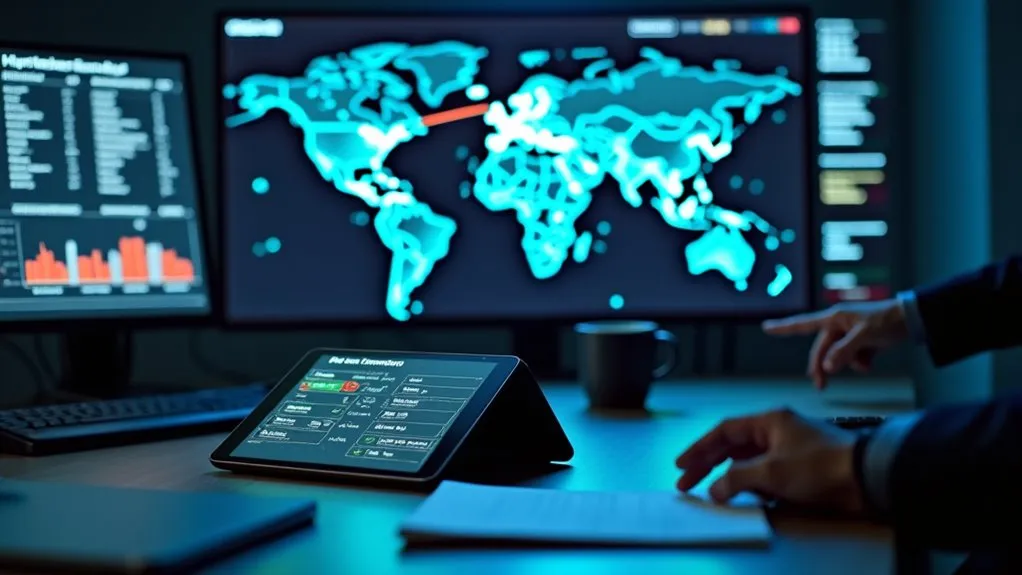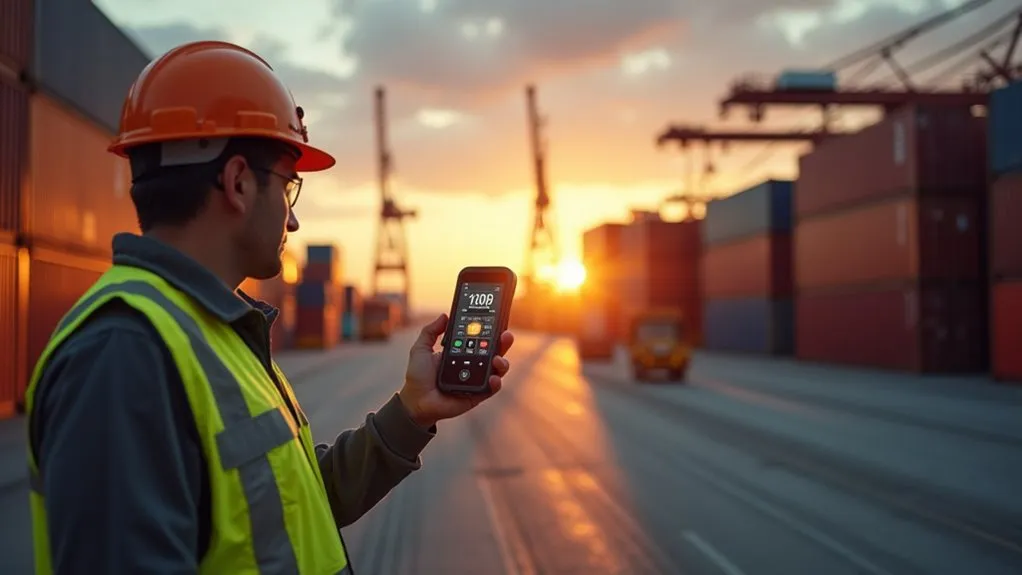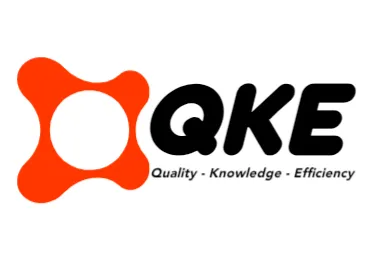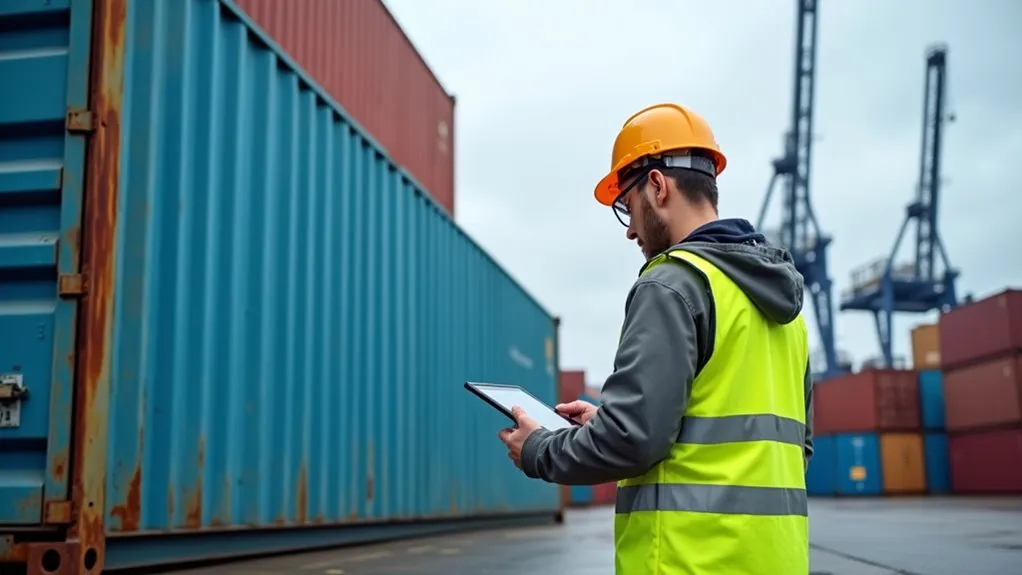To track and trace a container step by step, start by gathering essential identifiers like the Container Number, Bill of Lading Number, and carrier details from booking forms. Select a reliable tracking platform with real-time updates and integration features. Accurately input and verify shipment data to ensure precision. Monitor key milestones such as vessel departure and delivery via alerts and ETA predictions. Tackle issues like delays proactively. Explore further to uncover deeper insights and strategies.
Key Takeaways
- Gather essential details like Container Number, Bill of Lading Number, and port information from booking documents.
- Choose a reliable tracking platform with real-time updates and integration capabilities for efficiency.
- Enter and verify shipment details accurately using original documents or OCR automation tools.
- Monitor key milestones like vessel departure and delivery through alerts and ETA predictions.
- Resolve issues by addressing data discrepancies and ensuring security against cyber threats.
Gathering Essential Tracking Information
Before embarking on the process of tracking a container, one must first gather the essential information that serves as the foundation for accurate monitoring. Key identifiers like the Container Number, a unique code of four letters and seven digits, are critical. This number, often found on booking forms or the container door, is a primary input for tracking, offering precision over other identifiers. The Bill of Lading (B/L) Number, another vital identifier, details shipment specifics and covers multiple containers if applicable.
Efficient Detail Compilation also involves collecting data from Identifier Sources such as carrier names, vessel details, and voyage numbers to pinpoint shipments. Additionally, noting Port of Loading, Port of Discharge, and estimated times of departure and arrival enhances tracking accuracy. Supplementary data, including booking numbers and cargo specifics, further supports the process, ensuring all necessary information is systematically organized for effective container monitoring. Utilizing platforms like GoComet can simplify this process by allowing users to input container or bill of lading numbers for real-time updates on the Online Container Tracking page.
Choosing the Right Tracking Platform
Having compiled the necessary information for container tracking, the next step involves selecting an appropriate platform to facilitate accurate and efficient monitoring. A thorough Vendor Evaluation is critical, assessing factors like cost, security, and support availability. Equally important is a detailed Feature Comparison to ensure the platform meets specific needs such as real-time tracking, global coverage, and system integration.
To aid in decision-making, a structured analysis of key criteria can be beneficial. Below is a concise overview of essential platform attributes:
| Criteria | Importance | Evaluation Focus |
|---|---|---|
| Real-time Tracking | High | Accuracy and Updates |
| Integration Capabilities | Critical | Compatibility with TMS/ERP |
| Data Analytics | Moderate to High | Predictive and Historical Data |
| User Experience | Essential | Intuitive UI and Mobile Access |
This analytical approach ensures selection of a platform that enhances supply chain visibility and operational efficiency.
Entering and Verifying Shipment Details

Initiating the process of tracking a container requires meticulous attention to entering and verifying shipment details on the chosen platform. Users must input essential identifiers such as the Container Number, Bill of Lading (B/L) Number, or Booking Number, ensuring accuracy by cross-referencing with original shipping documents. Leveraging OCR Automation, platforms can scan container numbers from images, minimizing manual errors in data entry. For container numbers, the format—4 letters and 7 digits—must be validated, with the last digit serving as a check for Digit Validation using tools like BIC Check Digit Calculators.
Additionally, verifying B/L details involves confirming shipper, consignee, and freight information, ensuring the number links to the correct container in the system. Manual selection of shipping lines may be necessary if autodetection fails. Accuracy is critical, as errors can disrupt the process. Cross-checking vessel, port, and voyage data further ensures data integrity across the tracking platform.
Monitoring Key Milestones and Updates

After ensuring the accuracy of shipment details, the focus shifts to monitoring key milestones and updates throughout the container’s journey. This process involves tracking critical events such as empty container pick-up, gate-in at port, vessel departure, transshipment, and final delivery. Utilizing data from shipping line portals, GPS/IoT devices, vessel AIS, and port systems, stakeholders gain enhanced visibility into real-time location and status changes.
Proactive Alerts play a vital role by notifying users of delays or condition issues, enabling swift action to mitigate risks. Additionally, ETA Predictions provide accurate arrival estimates, improving planning and customer communication. Third-party tracking platforms consolidate data for a unified view, ensuring efficiency in identifying bottlenecks and reducing costs like demurrage fees. By closely monitoring milestones, stakeholders optimize resource allocation and maintain control over the shipment process, ensuring timely updates and better service delivery without overlooking critical developments.
Addressing Common Tracking Issues

Numerous challenges often disrupt the process of tracking and tracing containers, impacting efficiency and reliability across the supply chain. Data accuracy issues, inconsistent sources, and lack of real-time visibility often result in gaps, with carrier updates lagging 6-12 hours behind events. Transshipment blind spots and port congestion, as seen with 179 ships delayed at LA Port in 2021, further complicate tracking. Technological limitations, including siloed systems and connectivity issues in remote areas, hinder integration and updates.
To mitigate these, Data Standardization is critical, ensuring uniformity across platforms to reduce discrepancies and validation errors, which cause 80% of tracking failures. Additionally, robust Security Protocols are essential to combat the 400% rise in shipping cyberattacks since 2020, protecting data integrity from breaches and unauthorized access. By addressing human errors, which contribute to over 80% of disruptions, and enhancing system sync, stakeholders can significantly improve tracking reliability and operational efficiency.

 Tiếng Việt
Tiếng Việt 日本語
日本語 中文 (中国)
中文 (中国) 한국어
한국어
